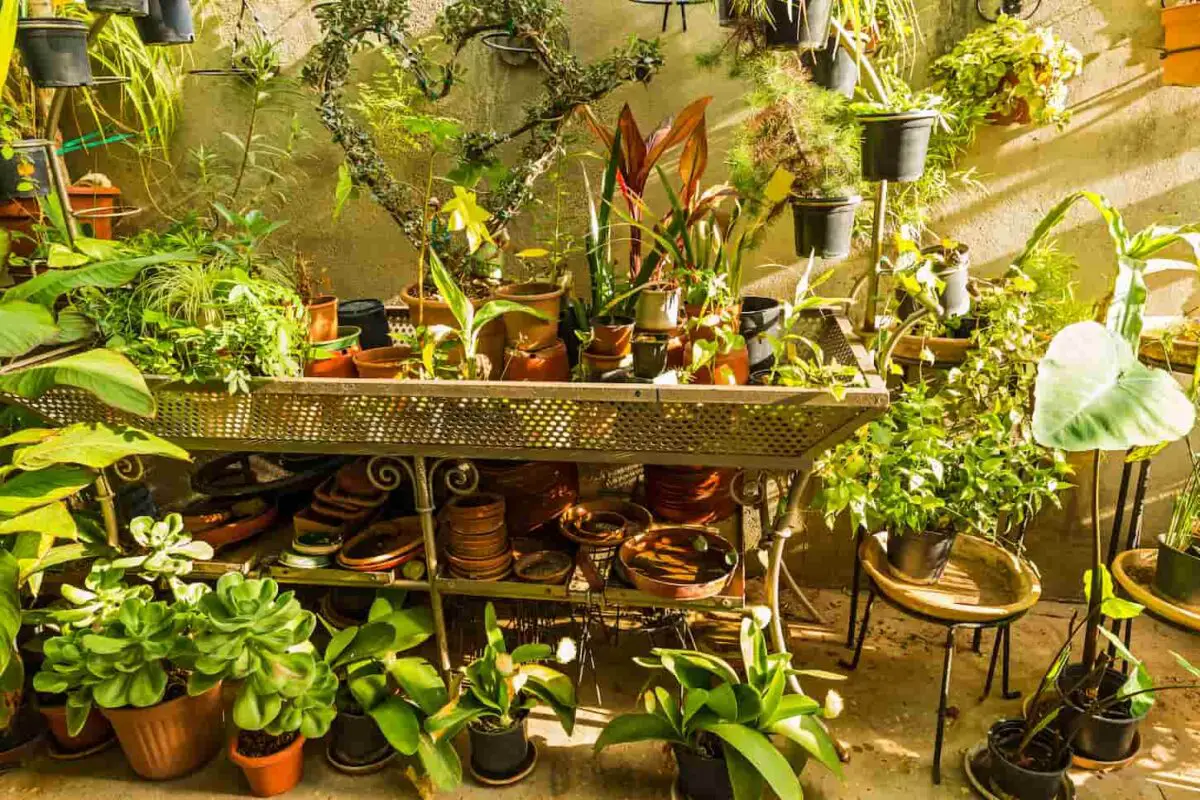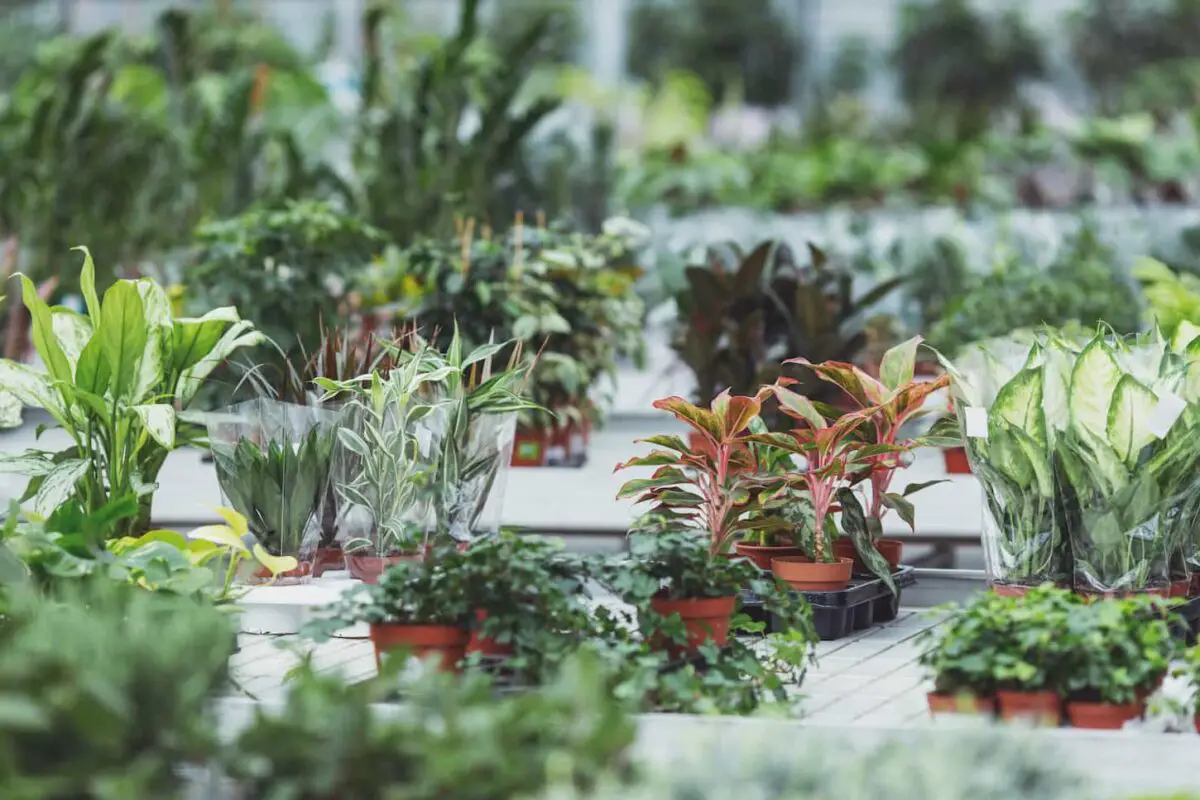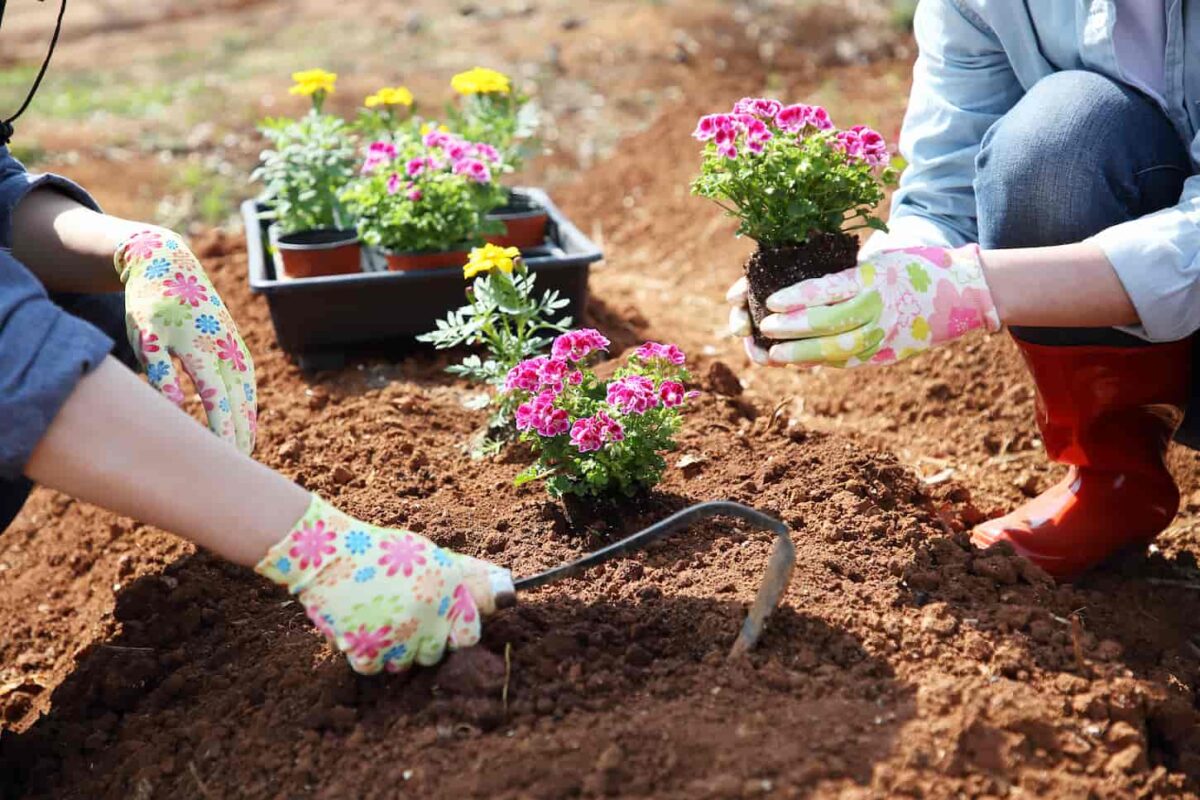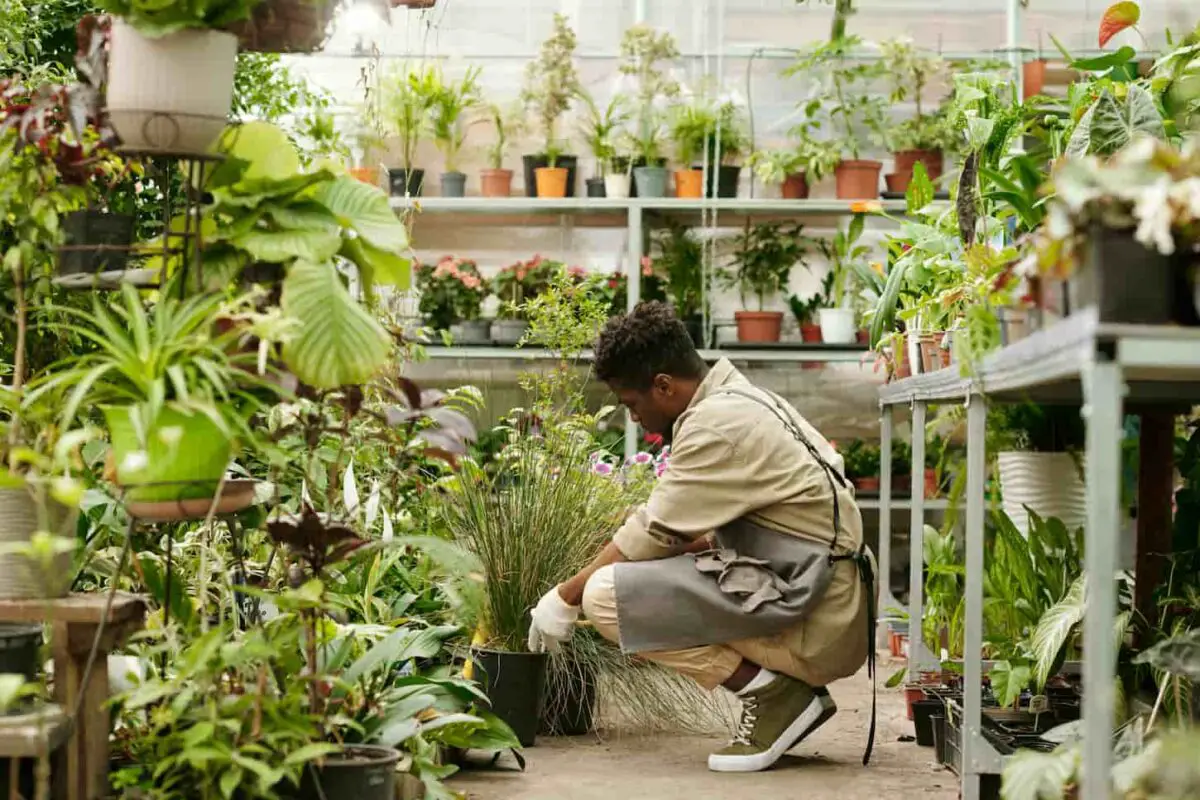As a gardener, I have always been interested in finding ways to maximize the efficiency of my garden. Companion planting is one of the ways I have found to be particularly helpful. Companion planting is the practice of planting different plant species in close proximity so that they can offer identifiable benefits to one another.
Companion planting can be simple (growing flowers near crops to attract pollinating insects) or complex (planting specific plants together to deter pests and improve soil quality). Choosing the right companion plants means gardeners can increase soil nutrients, deter pests, and help a garden thrive.
To help you get started with companion planting, I have created multiple tables of compatible and incompatible companion plants later in this article. Using these tables, you can decide which plants to grow together and which to keep apart by variety. Happy gardening!

What is Companion Planting?
Companion planting is a gardening technique where different plants are grown together to help each other thrive by preventing pests, attracting beneficial insects, improving crop quality and yield, and managing soil improvement. Companion planting may also involve crop rotation or interplanting
It’s a way to create a positive relationship between plants. This method has been used for centuries and is still popular today because of its many benefits.
Definition
Companion planting is an organic method of planting different plant species close to other species so that (ideally) both offer identifiable benefits to one another. The benefits can be one-sided, with one plant offering most of the partnership advantages to the other. The practice involves planting specific plants near each other to prevent or protect them from pests and diseases, enhance nutrient uptake, and increase crop production.
History
The concept of companion planting has been around for centuries. Native Americans, for instance, used companion planting to grow the “Three Sisters” – corn, beans, and squash – together. The corn provided a trellis for the beans to climb, while the beans added nitrogen to the soil, which the corn and squash needed. The squash, in turn, provided a ground cover that helped to retain moisture in the soil and deter pests.
Companion planting has gained popularity in recent years due to its many benefits. It is an eco-friendly and sustainable way to grow plants and can help reduce the need for pesticides and fertilizers.
How to skip ahead to the tables
If you’d like to skip learning about the benefits and how-tos of companion planting (and you want to skip ahead to the tables of what does and doesn’t work), you can use this table of contents to do just that.
If you’re new to companion planting, I recommend you at least skim all of the information. You’ll get to the tables soon enough, I promise. However
Benefits of Companion Planting
As a gardener, I have found that companion planting is a valuable technique that can help me grow healthier plants and increase my yield. Companion planting involves growing different plants that benefit each other in some way. Here are some of the benefits of companion planting that I have experienced.
Companion planting provides pest control and attracts beneficial insects
One of the most significant benefits of companion planting is natural pest control. Planting certain plants together can help repel pests and attract beneficial insects.
- Planting garlic with tomatoes can help deter spider mites,
- While planting basil with tomatoes can help repel tomato hornworms and attract bees.
- Planting marigolds with vegetables can help deter pests such as nematodes and aphids – while attracting beneficial insects such as ladybugs and lacewings that feed on aphids.
Another benefit of companion planting is improved pollination. By planting flowers that attract pollinators, such as bees and butterflies, you can help improve pollination and increase yields. For example, planting sunflowers and zinnias can help attract bees and butterflies to your garden, which can help pollinate your vegetables and fruits.
Companion planting improves crop yield and quality
Companion planting can also improve crop yield and quality. By planting certain plants together, I can create a more favorable microclimate for growth.
Some plants have allelopathic properties, which means they release chemicals that can inhibit the growth of other plants. By planting compatible plants together, you can avoid negative effects and promote healthy growth. For example, planting carrots and onions together can improve the flavor of both crops.
Companion planting improves soil quality and fertility
Companion planting can also help improve soil fertility by fixing nitrogen and adding organic matter to the soil. For example, planting legumes such as peas and beans can help fix nitrogen in the soil, which is essential for plant growth. Similarly, planting cover crops such as clover and buckwheat can help add organic matter to the soil, which improves soil structure and fertility.
Other plants, such as sunflowers, can help break up compacted soil and improve drainage. I can create a healthy, balanced ecosystem in my garden by planting various plants together.
Overall, companion planting is a great way to maximize your garden’s efficiency and promote healthy growth. By understanding which plants work well together and which don’t, you can create a harmonious garden that benefits all plants.

Companion Planting Techniques
Companion planting is a technique that involves planting different plant species together to promote healthy growth and protect against pests and diseases.
Here are some common companion planting techniques.
Plant Pairing
When it comes to companion planting, plant pairing is a popular technique. Plant pairing involves planting two or more plant species that benefit each other when grown together. For example, planting tomatoes and basil together can help repel pests and improve the flavor of the tomatoes. Similarly, planting marigolds with vegetables can help deter pests and attract beneficial insects. A common way to pair plants is to choose plants with complementary characteristics. For example, tall plants can provide shade for shorter plants, while plants with deep roots can help break up compacted soil for shallow-rooted plants.
Crop Rotation
Crop rotation involves planting different crops in a specific order to prevent soil-borne diseases and pests. I like to rotate my crops yearly to keep the soil healthy and productive. For example, I might plant tomatoes and peppers in one bed one year, then plant beans and peas in the same bed the following year. This helps prevent soil-borne diseases from building up and affecting the plants.
Here’s another way crop rotation helps. For example, planting legumes like peas or beans one year, followed by a brassica like broccoli or cabbage the next year, can help improve soil fertility and reduce pest problems.
Interplanting
Interplanting involves planting different plants in the same bed to provide mutual benefits. For example, I like to plant marigolds with my tomatoes because the marigolds help repel pests that might attack the tomatoes. I also like to plant herbs like basil and thyme with my vegetables because they attract beneficial insects that help pollinate the plants.
Interplanting involves planting different plant species together in the same area simultaneously. This technique can help maximize space and increase yields. For example, planting lettuce between rows of broccoli or cauliflower can help use the space and provide a quick harvest before the larger plants take over.
When interplanting, it’s important to choose plant species that have similar growing requirements and won’t compete with each other for resources like water and nutrients. Overall, using companion planting techniques can help improve the health and productivity of your garden. By choosing plant species that benefit each other and using techniques like plant pairing, crop rotation, and interplanting, you can create a thriving and diverse garden.
Trap Cropping
Trap cropping involves planting a sacrificial crop that pests are attracted to – to protect the main crop. For example, I might plant a row of radishes next to my broccoli to attract flea beetles away from the broccoli. This helps protect the broccoli from damage and allows it to grow strong and healthy. I don’t need a ton of radishes, so if the beetles and bugs get some of them, it’s far less annoying than if they get my broccoli.
Popular Companion Planting Combinations
When it comes to companion planting, many combinations work well together. Here are a few popular ones that I have personally tried and found success with:
- Tomatoes and basil: Basil helps repel harmful insects, such as tomato hornworms and whiteflies, known to attack tomato plants. Plus, the pungent aroma of basil makes it a great addition to any tomato dish.
- Carrots and onions: Onions help repel the carrot fly, which can be a major pest for carrot plants. Plus, the two vegetables complement each other well in many recipes.
- Beans and corn: Beans fix nitrogen in the soil, which corn needs to grow. Plus, the tall corn stalks provide a natural trellis for the beans to climb.
- Marigolds and just about anything: Marigolds are known to repel many common garden pests, making them a great companion plant for just about any vegetable.
Of course, these are just a few examples of successful companion planting combinations. The key is experimenting and finding what works best for your garden. Remember that not all plants get along, so it’s important to research before planting anything together.
In addition to the combinations listed above, many plants are considered “bad companions” and should not be planted together. For example, tomatoes and potatoes should not be planted together as they are susceptible to the same types of blight. Companion planting can be a great way to control pests and naturally improve your garden’s health. You can find the perfect backyard or home garden combinations with little research and experimentation.
Plants Incompatible with Companion Planting
Regarding companion planting, it’s not just about pairing plants that work well together but also avoiding planting certain plants that can harm each other. Here are some plants that are generally considered incompatible with companion planting.
- Tomatoes and Brassicas: Tomatoes and brassicas, such as broccoli, cabbage, and cauliflower, are not good companions. Brassicas release compounds that can inhibit the growth of tomatoes, while tomatoes can attract pests that can damage brassicas.
- Beans and Onions: Beans and onions are not good companions. Beans are nitrogen-fixing plants, which means they have a symbiotic relationship with bacteria that live in their roots and convert nitrogen from the air into a form that plants can use. Onions, conversely, do not like high nitrogen levels and can be stunted by it.
- Garlic and Peas: Garlic and peas are not good companions. Garlic can stunt the growth of peas, and the two plants can also attract the same pests.
- Tomatoes and Potatoes: Tomatoes and potatoes are not good companions. They are both nightshade family members and can be susceptible to the same diseases, such as blight.
- Onions and Peas: Onions and peas are not good companions. Onions can stunt the growth of peas, and the two plants can also attract the same pests.
It’s important to remember that these are general guidelines, and there may be exceptions depending on the specific varieties of plants you are growing and your local conditions. Researching and experimenting to find out what works best in your garden is always a good idea.

Quick Reference Tables: Compatible and Incompatible Pairings
These tables will help you quickly determine what pairings generally do or do not work. Please remember that exceptions may depend on specific plant varieties, local growing conditions, and other factors.
Fruit (common garden-grown fruit and fruit trees)
While fruits are typically less common in vegetable gardens, some still get grown (like strawberries or fruit trees). We do both several kinds of fruit trees and strawberries. An important note with strawberries: as tempting as having a “set” strawberry bed is tempting, it’s still important to rotate the bed used for them at least every few years. Or you will get lots and lots of slugs or snails. We get snails. Thankfully, we fixed that issue between rotating the crops and letting our chickens forage in the area.
| Fruit | Compatible Plants | Incompatible Plants |
|---|---|---|
| Apples | Apricots, pears, plums, quinces | Cherries, peaches, raspberries, strawberries |
| Apricots | Apples, pears, plums, quinces | Cherries, peaches, raspberries, strawberries |
| Avocados | N/A | N/A |
| Bananas | N/A | N/A |
| Cantaloupes | N/A | N/A |
| Cherries | Apples, pears, plums, raspberries, strawberries | Apricots, nectarines, peaches, plums |
| Citrus | N/A | N/A |
| Grapes | N/A | N/A |
| Kiwis | N/A | N/A |
| Mangoes | N/A | N/A |
| Nectarines | Apples, pears, plums, raspberries, strawberries | Apricots, cherries, peaches, plums |
| Peaches | Apples, pears, plums, raspberries, strawberries | Apricots, cherries, nectarines, plums |
| Pears | Apples, apricots, nectarines, peaches, plums, quinces | Cherries, raspberries, strawberries |
| Plums | Apples, apricots, nectarines, peaches, pears, quinces | Cherries, raspberries, strawberries |
| Raspberries | Apples, apricots, nectarines, peaches, plums, pears, quinces | Cherries, strawberries |
| Strawberries | Apples, apricots, nectarines, peaches, plums, pears, quinces | Cherries, raspberries |
| Watermelons | N/A | N/A |
Herbs
Pairing herbs with the right fruits, veggies, or other herbs can help many things. Here’s your quick guide on what works (and doesn’t).
| Herb | Compatible Companion Plants | Incompatible Companion Plants |
|---|---|---|
| Basil | Tomatoes, peppers, roses, lavender, beans, carrots, cucumbers, melons, squash, and zucchini | Fennel, garlic, onions, strawberries |
| Chives | Tomatoes, onions, carrots, lettuce, peas, and strawberries | Beans, fennel, garlic, and potatoes |
| Cilantro | Carrots, peas, tomatoes, basil, dill, marigold, nasturtiums, sunflowers, lettuce | Fennel, garlic, onions, rosemary, thyme |
| Dill | Carrots, cucumbers, onions, leeks, and potatoes | Fennel, garlic, and tomatoes |
| Garlic | Onions, potatoes, beans, and peas | Basil, fennel, and strawberries |
| Mint | Carrots, lettuce, peas, and strawberries | Basil, fennel, and tomatoes |
| Oregano | Tomatoes, peppers, basil, and thyme | Beans, fennel, garlic, onions |
| Parsley | Carrots, tomatoes, lettuce, peas, and beans | Fennel, garlic, and onions |
| Rosemary | Tomatoes, lavender, and thyme | Beans, fennel, garlic, and onions |
| Sage | Tomatoes, peppers, basil, thyme | Beans, fennel, garlic, and onions |
| Thyme | Tomatoes, peppers, basil, and oregano | Beans, fennel, garlic, onions |
Technically, you can grow cilantro next to broccoli, but I don’t recommend it. It makes both taste weird. I learned that in 6th-grade science class when we grew a garden!
Vegetables
Growing veggies alone are doable, but when you pair them up correctly? They grow so much better – and they taste a ton better.
| Vegetable | Compatible Companion Plants | Incompatible Companion Plants |
|---|---|---|
| Beans | Carrots, corn, cucumbers, eggplant, lettuce, melons, peas, peppers, potatoes, radishes, spinach, squash, tomatoes | Alliums (onions, garlic, chives, shallots), basil, fennel, garlic, onions, strawberries, potatoes |
| Beets | Carrots, lettuce, onions, peas, radishes, spinach, tomatoes | Celery, corn, cucumbers, fennel, garlic, kohlrabi, leeks, parsnips, potatoes, raspberries, strawberries |
| Broccoli | Cabbage, cauliflower, kale, kohlrabi, lettuce, onions, peas, potatoes, radishes, spinach, tomatoes | Brussels sprouts, celery, fennel, garlic, leeks, mustard, parsnips, rutabagas, turnips |
| Brussels sprouts | Cabbage, cauliflower, kale, kohlrabi, lettuce, onions, peas, potatoes, radishes, spinach, tomatoes | Broccoli, celery, fennel, garlic, leeks, mustard, parsnips, rutabagas, turnips |
| Cabbage | Broccoli, Brussels sprouts, cauliflower, kale, kohlrabi, lettuce, onions, peas, potatoes, radishes, spinach, tomatoes | Celery, fennel, garlic, leeks, mustard, parsnips, rutabagas, turnips |
| Carrots | Beans, cabbage, corn, cucumbers, eggplant, lettuce, melons, peas, peppers, potatoes, radishes, spinach, squash, tomatoes | Basil, fennel, garlic, onions, strawberries |
| Cauliflower | Cabbage, Brussels sprouts, kale, kohlrabi, lettuce, onions, peas, potatoes, radishes, spinach, tomatoes | Broccoli, celery, fennel, garlic, leeks, mustard, parsnips, rutabagas, turnips |
| Celery | Beans, carrots, corn, cucumbers, eggplant, lettuce, melons, peas, peppers, potatoes, radishes, spinach, squash, tomatoes | Basil, fennel, garlic, onions, strawberries |
| Cucumbers | Beans, corn, eggplant, lettuce, melons, peas, peppers, potatoes, radishes, spinach, squash, tomatoes | Basil, fennel, garlic, onions, strawberries |
| Eggplant | Beans, corn, cucumbers, lettuce, melons, peas, peppers, potatoes, radishes, spinach, squash, tomatoes | Basil, fennel, garlic, onions, strawberries |
| Lettuce | Beans, carrots, corn, cucumbers, eggplant, peas, peppers, potatoes, radishes, spinach, squash, tomatoes | Basil, fennel, garlic, onions, strawberries |
| Melons | Beans, corn, cucumbers, eggplant, lettuce, peas, peppers, potatoes, radishes, spinach, squash, tomatoes | Basil, fennel, garlic, onions, strawberries |
| Onions | Beans, carrots, corn, cucumbers, eggplant, lettuce, melons, peas, peppers, potatoes, radishes, spinach, squash, tomatoes | Basil, fennel, garlic, strawberries |
| Peas | Beans, carrots, corn, cucumbers, eggplant, lettuce, melons, potatoes, radishes, spinach, squash, tomatoes, turnips | Basil, fennel, garlic, onions, strawberries, shallots |
| Peppers | Beans, carrots, corn, cucumbers, eggplant, lettuce, melons, peas, potatoes, radishes, spinach, squash, tomatoes, oregano, parsley | Basil, fennel, garlic, onions, strawberries |
| Potatoes | Beans, carrots, corn, cucumbers, eggplant, lettuce, melons, peas, peppers, radishes, spinach, squash, tomatoes | Basil, fennel, garlic, onions, strawberries |
| Radishes | Beans, carrots, corn, cucumbers, eggplant, lettuce, melons, peas, peppers, potatoes, spinach, squash, tomatoes | Basil, fennel, garlic, onions, strawberries |
| Spinach | Beans, carrots, corn, cucumbers, eggplant, lettuce, melons, peas, peppers, potatoes, radishes, squash, tomatoes | Basil, fennel, garlic, onions, strawberries |
| Squash | Beans, carrots, corn, cucumbers, eggplant, lettuce, melons, peas, peppers, potatoes, radishes, spinach, tomatoes | Basil, fennel, garlic, onions, strawberries |
| Tomatoes | Beans, carrots, corn, cucumbers, eggplant, lettuce, melons, peas, peppers, potatoes, radishes, spinach, squash, marigolds, thyme, sage, parsley | Basil, fennel, garlic, onions, strawberries, potatoes, brassicas (cabbage, broccoli, cauliflower) |

Flowers that should be in your veggie garden (yes, really!)
Planting flowers in a vegetable garden has a lot of benefits beyond attracting beneficial insects to help with pollination. They can also deter pests and improve the soil.
| Vegetable | Flower | Compatible | Notes |
|---|---|---|---|
| Beans | Marigolds | Yes | Marigolds repel pests that can harm beans. |
| Beets | Nasturtiums | Yes | Nasturtiums attract beneficial insects that help to control pests. |
| Broccoli | Calendula | Yes | Calendula repels pests that can harm broccoli. |
| Cabbage | Marigolds | Yes | Marigolds repel pests that can harm cabbage. |
| Carrots | Roses | Yes | Roses attract beneficial insects that help to control pests. |
| Corn | Sunflowers | Yes | Sunflowers attract beneficial insects that help to control pests. |
| Cucumbers | Marigolds | Yes | Marigolds repel pests that can harm cucumbers. |
| Eggplant | Marigolds | Yes | Marigolds repel pests that can harm eggplant. |
| Lettuce | Marigolds | Yes | Marigolds repel pests that can harm lettuce. |
| Melons | Marigolds | Yes | Marigolds repel pests that can harm melons. |
| Onions | Roses | Yes | Roses attract beneficial insects that help to control pests. |
| Peas | Roses | Yes | Roses attract beneficial insects that help to control pests. |
| Peppers | Marigolds | Yes | Marigolds repel pests that can harm peppers. |
| Potatoes | Marigolds | Yes | Marigolds repel pests that can harm potatoes. |
| Radishes | Marigolds | Yes | Marigolds repel pests that can harm radishes. |
| Spinach | Marigolds | Yes | Marigolds repel pests that can harm spinach. |
| Squash | Marigolds | Yes | Marigolds repel pests that can harm squash. |
| Tomatoes | Marigolds | Yes | Marigolds repel pests that can harm tomatoes. |
| Zucchini | Marigolds | Yes | Marigolds repel pests that can harm zucchini. |

Challenges and Considerations
Not every perfect companion plant pair always works; individual factors (growing conditions, plant varieties, drought, or other conditions) may inhibit the pairing from working as intended. Be sure to do both book research and in-person garden testing to see what does (or doesn’t) work.
Competition for Resources
When practicing companion planting, it’s important to consider the competition for resources among the different plants. Plants have different needs for nutrients, water, sunlight, and space. If plants are too close together, they may compete for these resources, leading to stunted growth and reduced yields.
One way to avoid resource competition is to choose companion plants with different needs. For example, planting shallow-rooted plants with deep-rooted plants can help avoid competition for water and nutrients. Similarly, planting tall plants with short plants can help maximize the use of space and sunlight.
Incompatible Plants
Not all plants make good companions. Some plants may harm each other when planted together. For example, some plants release chemicals that inhibit the growth of other plants. This is known as allelopathy.
It’s important to research which plants are compatible with each other before planting. Some common incompatible plant combinations include tomatoes and fennel, beans and onions, and potatoes and tomatoes.
Climate and Soil Conditions
Another consideration when practicing companion planting is the climate and soil conditions. Different plants thrive in different environments. Some plants prefer acidic soil. Other plants prefer alkaline soil. Some plants require full sun, while others prefer partial sun, shade, or full shade
It’s important to choose companion plants that are suited to the same climate and soil conditions. For example, planting heat-loving plants with cool-loving plants can lead to reduced yields and poor growth. Similarly, planting plants that require different amounts of water can lead to over- or under-watering.
Next Steps
After researching and exploring the world of companion planting, I have come to appreciate the many benefits it can offer to any garden. By planting compatible plants together, we can naturally deter pests, promote healthy growth, and increase yields. It is a sustainable and effective way to maintain a thriving garden without relying on harmful chemicals.
One of the most important aspects of companion planting is understanding which plants work well together and which do not.
Of course, this article is just a starting point, and there are many other factors to consider when planning a garden. But by keeping these basic guidelines in mind, we can create a harmonious and productive garden that benefits both the plants and the environment.
So, as I continue to experiment with companion planting in my garden, I am excited to see the results and to continue learning more about this fascinating practice. I encourage anyone interested in sustainable gardening to give it a try and see the many benefits it can offer.
Resources
Learning from your own experience is essential, but learning from others is also intelligent. These are the sources used in this article and our research to be more informed as homesteaders.
- Companion Planting Chart and Guide for Vegetable Gardens. (n.d.). Almanac.com. https://www.almanac.com/companion-planting-guide-vegetables.
- Companion planting in home gardens. (n.d.). UMN Extension. https://extension.umn.edu/planting-and-growing-guides/companion-planting-home-gardens.
- Kanuckel, A. (2022, June 20). Companion Planting Guide: Sow Easy. Farmers’ Almanac – Plan Your Day. Grow Your Life. https://www.farmersalmanac.com/companion-planting-guide.
